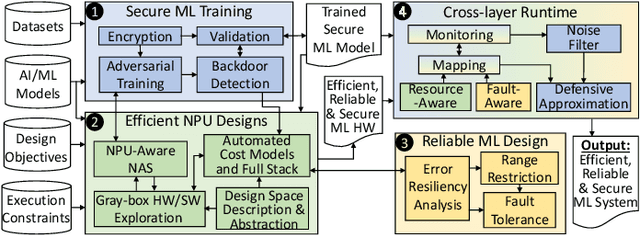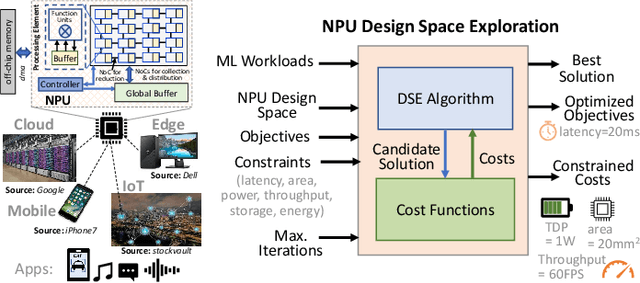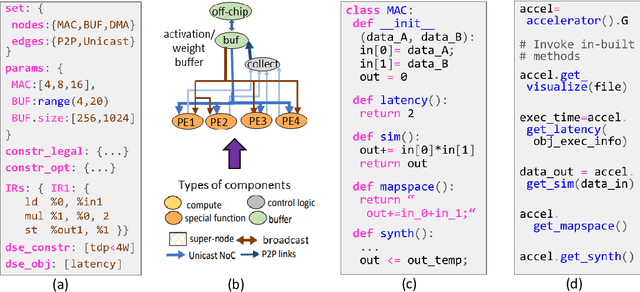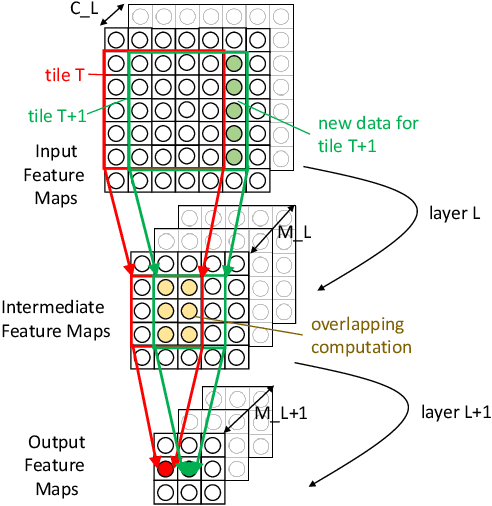Shail Dave
Special Session: Towards an Agile Design Methodology for Efficient, Reliable, and Secure ML Systems
Apr 18, 2022



Abstract:The real-world use cases of Machine Learning (ML) have exploded over the past few years. However, the current computing infrastructure is insufficient to support all real-world applications and scenarios. Apart from high efficiency requirements, modern ML systems are expected to be highly reliable against hardware failures as well as secure against adversarial and IP stealing attacks. Privacy concerns are also becoming a first-order issue. This article summarizes the main challenges in agile development of efficient, reliable and secure ML systems, and then presents an outline of an agile design methodology to generate efficient, reliable and secure ML systems based on user-defined constraints and objectives.
Hardware Acceleration of Sparse and Irregular Tensor Computations of ML Models: A Survey and Insights
Jul 02, 2020



Abstract:Machine learning (ML) models are widely used in many domains including media processing and generation, computer vision, medical diagnosis, embedded systems, high-performance and scientific computing, and recommendation systems. For efficiently processing these computational- and memory-intensive applications, tensors of these over-parameterized models are compressed by leveraging sparsity, size reduction, and quantization of tensors. Unstructured sparsity and tensors with varying dimensions yield irregular-shaped computation, communication, and memory access patterns; processing them on hardware accelerators in a conventional manner does not inherently leverage acceleration opportunities. This paper provides a comprehensive survey on how to efficiently execute sparse and irregular tensor computations of ML models on hardware accelerators. In particular, it discusses additional enhancement modules in architecture design and software support; categorizes different hardware designs and acceleration techniques and analyzes them in terms of hardware and execution costs; highlights further opportunities in terms of hardware/software/algorithm co-design optimizations and joint optimizations among described hardware and software enhancement modules. The takeaways from this paper include: understanding the key challenges in accelerating sparse, irregular-shaped, and quantized tensors; understanding enhancements in acceleration systems for supporting their efficient computations; analyzing trade-offs in opting for a specific type of design enhancement; understanding how to map and compile models with sparse tensors on the accelerators; understanding recent design trends for efficient accelerations and further opportunities.
 Add to Chrome
Add to Chrome Add to Firefox
Add to Firefox Add to Edge
Add to Edge